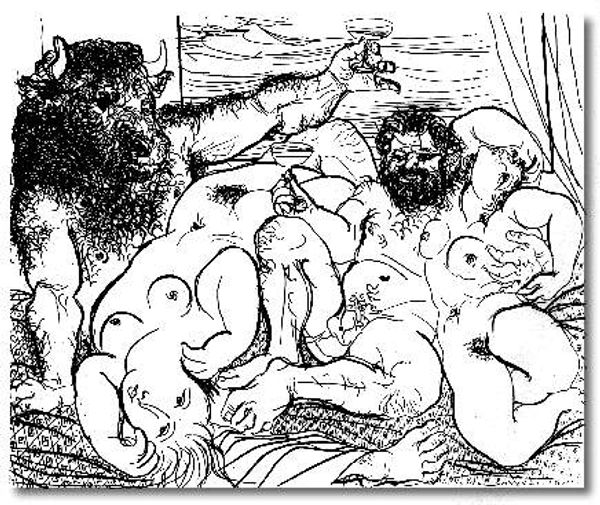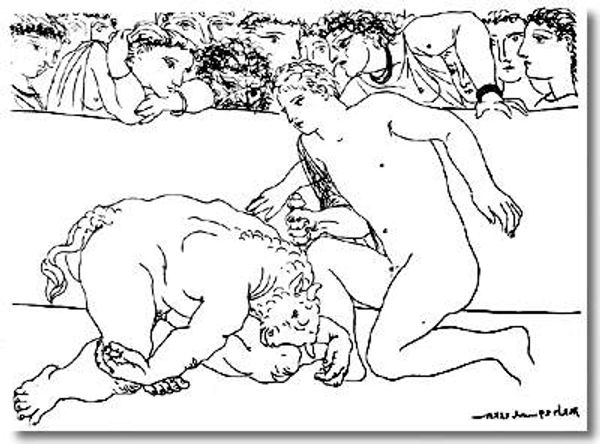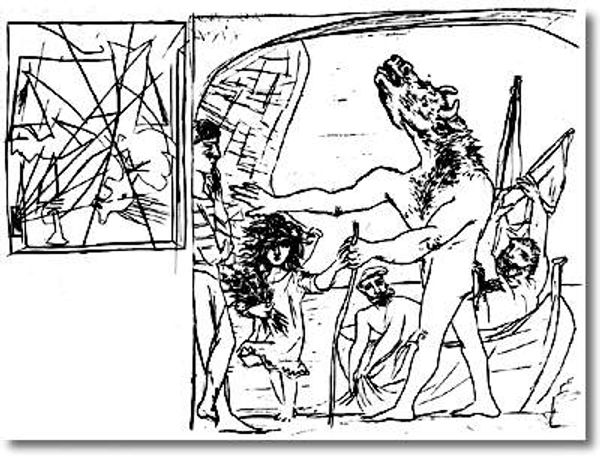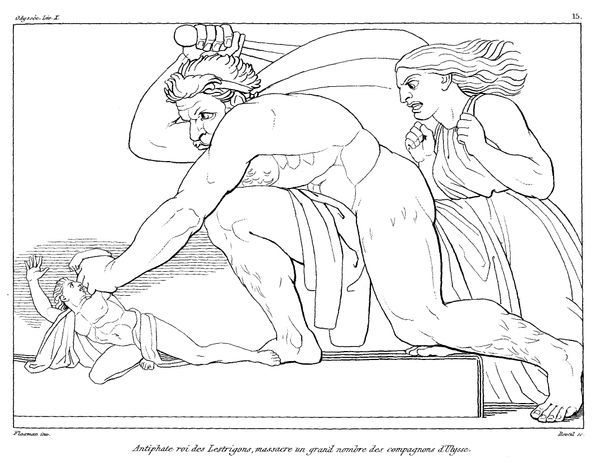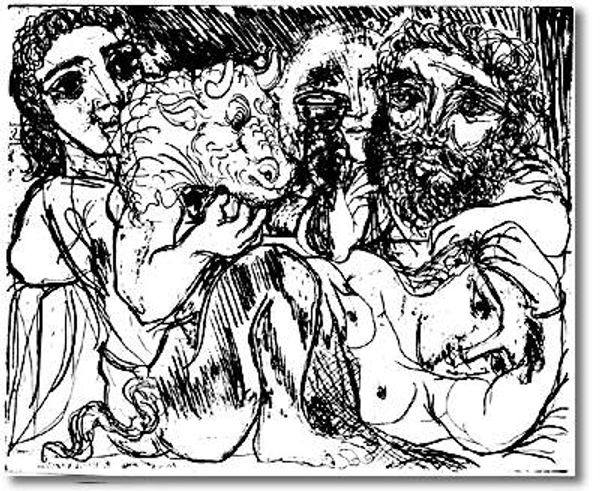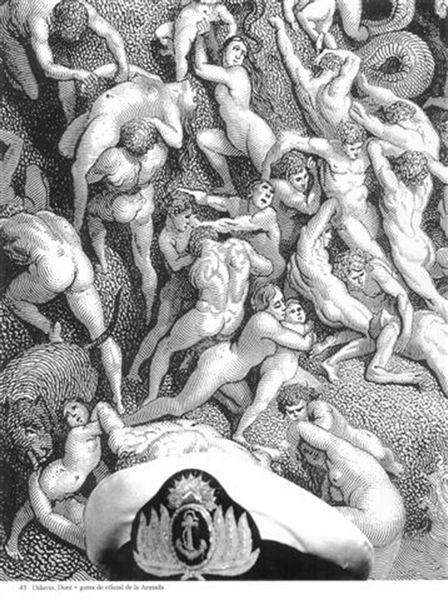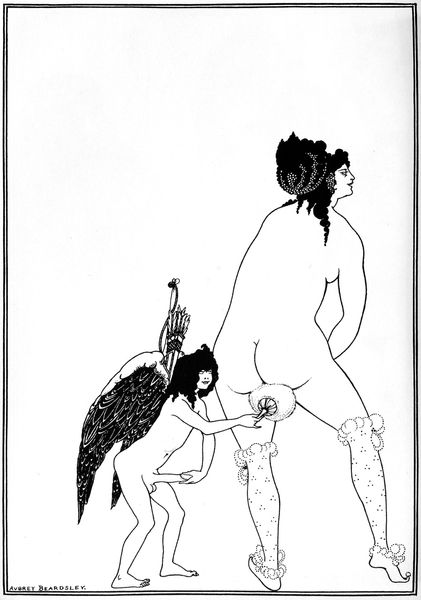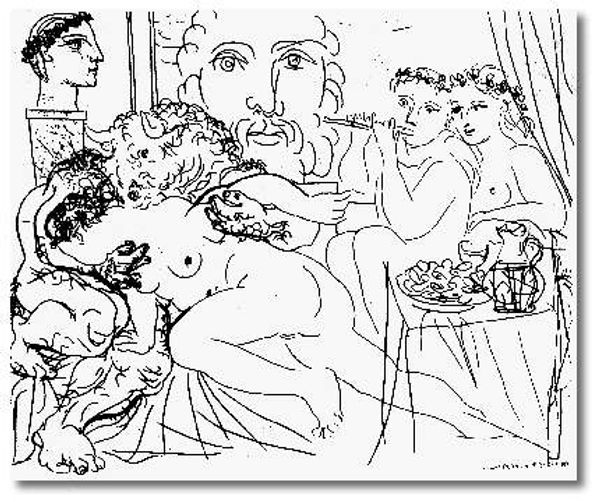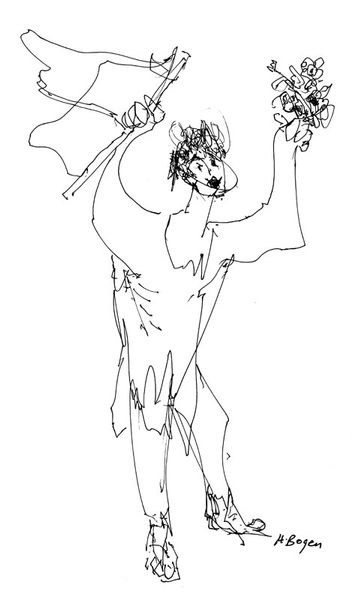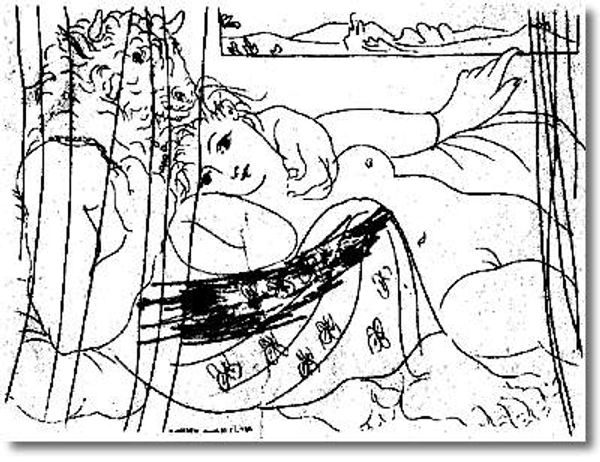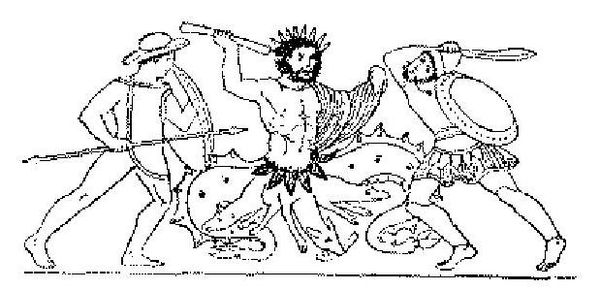
Dimensions: 34 x 44.8 cm
Copyright: Pablo Picasso,Fair Use
Curator: Welcome. We’re standing before Picasso's "Minotaur is dying," created in 1933 using pen and ink. It resides at the Musée Picasso in Antibes. Editor: Immediately, I am struck by the vulnerability of the scene. The raw lines convey so much pain. It is an immensely moving composition. Curator: Indeed. Notice how Picasso renders the minotaur's muscular frame using such minimal linework. The stark contrast of the white paper with the thick, dark ink lines emphasizes the creature's agony. Editor: The symbol of the Minotaur is multifaceted; often it embodies bestiality and the primal urges. Here the symbol is altered: a being of immense power now prostrate and broken. It reminds me of how civilizations and eras fall. Curator: And consider the faces peering down—expressions ranging from curiosity to detached concern. The emotional remove suggests an audience or witnesses rather than participants. Picasso sets them atop an unreadable plinth which could reference classical relief sculpture, perhaps an allegory for human indifference to suffering. Editor: Those figures certainly amplify the minotaur's isolation. It strikes me how Picasso uses classical mythological forms to engage the theme of death. Is it purely physical? Or does it evoke the death of certain ideals and modes of representation? Curator: The crosshatching across the minotaur’s chest denotes, of course, the trauma inflicted; and there's that sword casually discarded, adding a finality to the drama. It’s intriguing how cubistic fragmentation and classical themes blend so powerfully here. Editor: Absolutely. Even the act of creating the work reflects a cultural moment. The use of pen and ink nods to drawing’s crucial place at that time for sketches and journalistic reportage, revealing another kind of truth amid suffering. Curator: A potent observation. Seeing how Picasso uses deceptively simple means to depict such multifaceted loss makes it a key work for understanding his era. Editor: Yes, this is a profoundly evocative work, one that prompts reflections about power, empathy, and the fragility of existence.
Comments
No comments
Be the first to comment and join the conversation on the ultimate creative platform.
